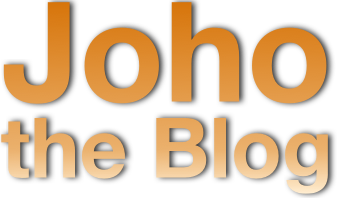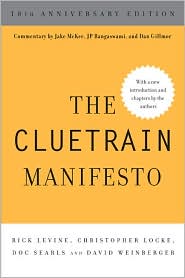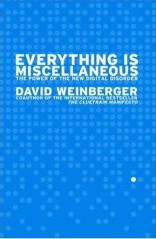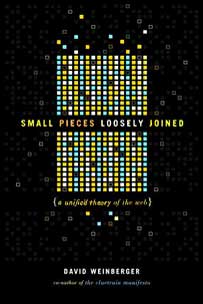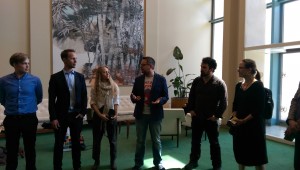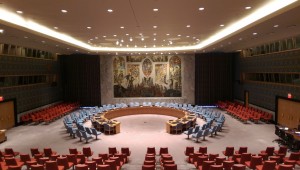December 17, 2015
The Library in the Life of the User: An open platform use case
OCLC has posted an excellent report based on a recent conference, looking at how libraries can participate in the life of users, rather than thinking about the user’s life within the library.
I like this a lot. I’ve been talking about it in terms of libraries now being able to participate in the appropriation of culture that traditionally has occurred in private discussions outside the library: The user borrows a book, takes it home, and talks about it with her friends, etc. It is in those conversations that the reader makes the work her own.
Now that many of those conversations occur online, the library has the opportunity to offer services that facilitate these conversations, learn from them, and contribute to the act of cultural appropriation. That’s a big change and a big opportunity. (I’d say it’s huge, but I can’t use that word without hearing it in Trump’s voice, not to mention envisioning the shape of his mouth when he says it. So, nope, that word’s gone.)
One of the points of talking about libraries in the life of the user–Lorcan Dempsey‘s phrase from 1973 (I am a Lorcan fan) [LATER: In the comments below Merrilee Proffitt points out that the report says that while Lorcan popularized the phrase, it was coined by Douglas Zweizig. Sorry!] –is that user lives are much bigger than their lives in libraries. The library’s services therefore should not be confined to the relatively limited range of things that users do in libraries. In fact, users’ lives are so big and varied and unpredictable that libraries on their own can’t possible provide every service or address every opportunity for engaging in their users’ many acts of cultural appropriation.
Therefore, libraries ought to be adopting open platforms, i.e., public-facing APIs that let anyone with an idea build a new service or integrate into their own sites or apps the ideas being generated by networks of library users. Open platforms are ideal where needs and opportunities are unpredictable. Outside of cats trapped in physicists’ boxes, there is no more unpredictable domain than how people are going to make sense of their culture together.
Therefore: Open platforms for libraries!
